
Interview with Christian Kerez
HD: You studied under Miroslav Šik, who is very popular on the Czech architectural scene. Could you say how Šik influenced you and how, from your current position, you perceive the intersections and differences in your own work?
CHK: Miroslav Šik was very important to me; he was someone who shaped me as a professor, primarily because he was a passionate teacher who not only partially taught alongside his practice but was simply present. He understood teaching as an experiment, constantly questioning, adjusting, and redefining his own approach to architecture through teaching. In one semester, he declared he was a postmodernist, and in the next, he claimed he wasn't a postmodernist at all. He was someone who taught with energy, even during the process of change while I was studying with him. Of course, he is also a strong personality; as a student, it is also important to define oneself in relation to such a dominant paternal figure. I think working with imagery was very important for me to find a holistic understanding of architecture. At the same time, however, I work much more abstractly; I imagine thousands of things that are also concrete, but I cannot hold onto any of them; I have so many interests that none has real validity. Therefore, I always seek substantial ideas before immediate work with images and analogies. But that was my first entry into architecture; my studies began with Miroslav Šik.
HD: In one of your texts, you write that in your house on Forsterstrasse, everything, from the construction to the articulation of the facade, derives from the spatial concept. Are you trying to think further about this concept of space, as you described it, or are you currently looking for other focal points in your work?
CHK: Architectural space is still the most important aspect of my understanding of architecture as a medium, as a discipline that has its own expressive possibilities and its own laws. In the house on Forsterstrasse, I followed certain architectural ideals that I no longer pursue today. Not because they are invalid; I still live in this house on Forsterstrasse, but because they have been exhausted for me, and I am interested in new themes. For example, the house for Tomio Okamura is a house that is divided into a large number of small spaces. And the spatiality there is not achieved through size and unity but through multiplicity and multiplication.
HD: Do you feel that your thinking about space is close to Adolf Loos, who also conceived his idea of space based on certain principles?
CHK: Adolf Loos has always fascinated me, but I am not sure whether the concept of Raumplan, which appears in his work only once, in a single essay, is really exhaustive for his work as an architect. I see the value of his work elsewhere; it is a very fragmented work full of tension, somewhere between a rigid exterior and a fluid interior, between a rigid system of axes that are assembled in a completely free, unexpected, surprising way. It is a transitional work with various components. For me, it is an example of the ambivalent character that fascinates me greatly.
But Loos as a theorist is less important to me; I have read his texts with pleasure, and I find it interesting what he writes about society, about materials; he describes life more than the individual building.
For me, it is a shortcut that followed his architectural work, and the concept of Raumplan is somewhat narrowly conceived.
HD: What role does theoretical thinking about architecture play for you and your work?
CHK: I must say none. For me, discussions about architecture come only after architecture. I try in certain ways to defend what I do as an architect, but essentially, my architecture has a deep character. And I am not a theorist. But I am someone who thinks about architecture, someone who looks carefully and attentively at things for a long time and questions them again. A theorist is someone who starts with theory and then creates a work that will illustrate that theory. For me, the work transcends theory. I am also skeptical about architects like Aldo Rossi, who are excellent theorists, but unfortunately, many buildings have an illustrative character. It is more interesting to read the text than to see the building itself. This does not apply to all of his buildings, but some. But fundamentally, it is possible; for example, Rem Koolhaas is an architect who started as a theorist and gradually worked his way to a work that has its own significance.
Thank you for the interview.
CHK: Miroslav Šik was very important to me; he was someone who shaped me as a professor, primarily because he was a passionate teacher who not only partially taught alongside his practice but was simply present. He understood teaching as an experiment, constantly questioning, adjusting, and redefining his own approach to architecture through teaching. In one semester, he declared he was a postmodernist, and in the next, he claimed he wasn't a postmodernist at all. He was someone who taught with energy, even during the process of change while I was studying with him. Of course, he is also a strong personality; as a student, it is also important to define oneself in relation to such a dominant paternal figure. I think working with imagery was very important for me to find a holistic understanding of architecture. At the same time, however, I work much more abstractly; I imagine thousands of things that are also concrete, but I cannot hold onto any of them; I have so many interests that none has real validity. Therefore, I always seek substantial ideas before immediate work with images and analogies. But that was my first entry into architecture; my studies began with Miroslav Šik.
HD: In one of your texts, you write that in your house on Forsterstrasse, everything, from the construction to the articulation of the facade, derives from the spatial concept. Are you trying to think further about this concept of space, as you described it, or are you currently looking for other focal points in your work?
CHK: Architectural space is still the most important aspect of my understanding of architecture as a medium, as a discipline that has its own expressive possibilities and its own laws. In the house on Forsterstrasse, I followed certain architectural ideals that I no longer pursue today. Not because they are invalid; I still live in this house on Forsterstrasse, but because they have been exhausted for me, and I am interested in new themes. For example, the house for Tomio Okamura is a house that is divided into a large number of small spaces. And the spatiality there is not achieved through size and unity but through multiplicity and multiplication.
HD: Do you feel that your thinking about space is close to Adolf Loos, who also conceived his idea of space based on certain principles?
CHK: Adolf Loos has always fascinated me, but I am not sure whether the concept of Raumplan, which appears in his work only once, in a single essay, is really exhaustive for his work as an architect. I see the value of his work elsewhere; it is a very fragmented work full of tension, somewhere between a rigid exterior and a fluid interior, between a rigid system of axes that are assembled in a completely free, unexpected, surprising way. It is a transitional work with various components. For me, it is an example of the ambivalent character that fascinates me greatly.
But Loos as a theorist is less important to me; I have read his texts with pleasure, and I find it interesting what he writes about society, about materials; he describes life more than the individual building.
For me, it is a shortcut that followed his architectural work, and the concept of Raumplan is somewhat narrowly conceived.
HD: What role does theoretical thinking about architecture play for you and your work?
CHK: I must say none. For me, discussions about architecture come only after architecture. I try in certain ways to defend what I do as an architect, but essentially, my architecture has a deep character. And I am not a theorist. But I am someone who thinks about architecture, someone who looks carefully and attentively at things for a long time and questions them again. A theorist is someone who starts with theory and then creates a work that will illustrate that theory. For me, the work transcends theory. I am also skeptical about architects like Aldo Rossi, who are excellent theorists, but unfortunately, many buildings have an illustrative character. It is more interesting to read the text than to see the building itself. This does not apply to all of his buildings, but some. But fundamentally, it is possible; for example, Rem Koolhaas is an architect who started as a theorist and gradually worked his way to a work that has its own significance.
Thank you for the interview.
The English translation is powered by AI tool. Switch to Czech to view the original text source.
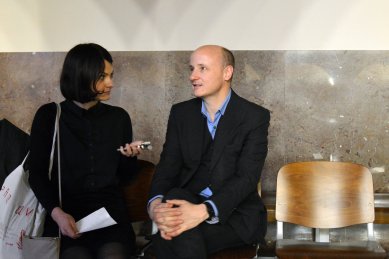
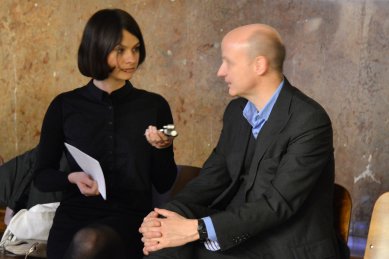
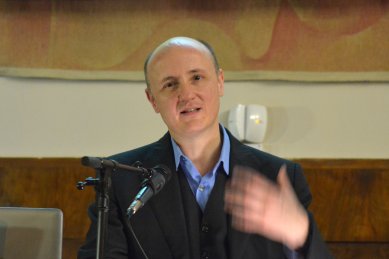
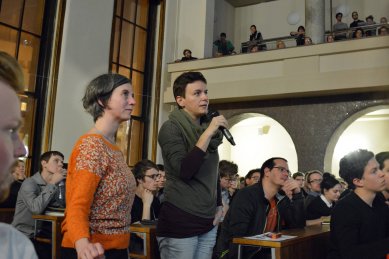
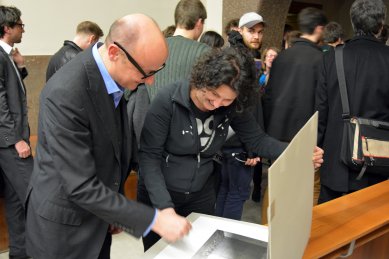
0 comments
add comment












